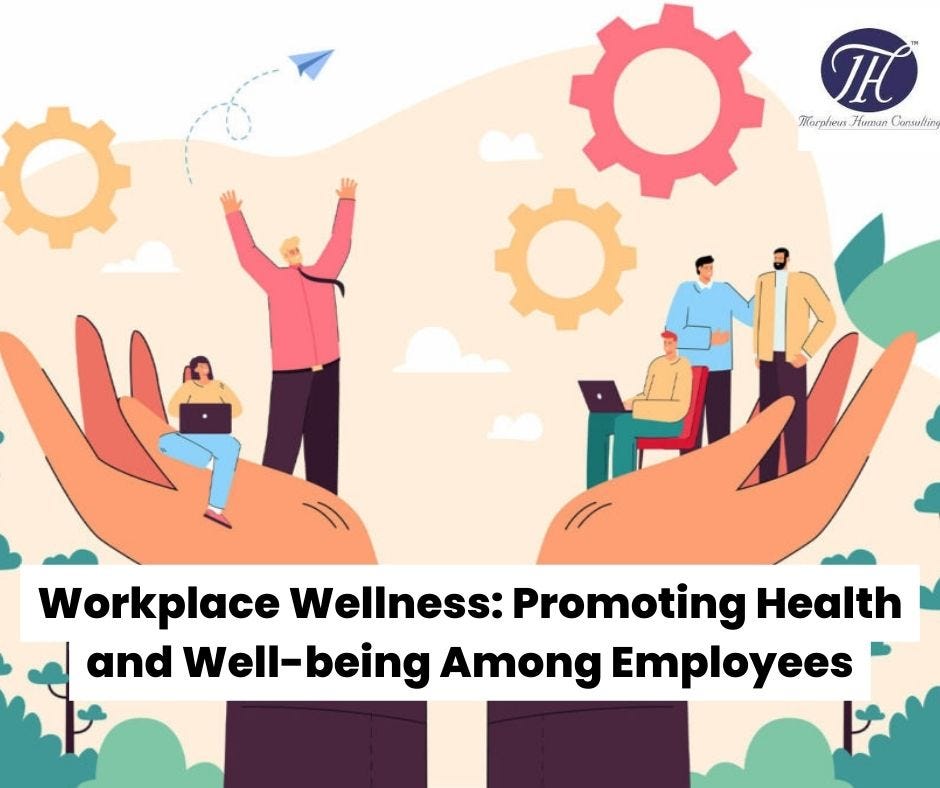
Employee Wellness Programs: Boosting Health, Happiness, and Productivity in the Workplace
In today’s fast-paced world, the demands on employees are higher than ever. Long hours, tight deadlines, and the constant digital buzz can lead to stress, burnout, and a decline in overall well-being. But what if there was a way for companies to not only support their employees’ health but also improve their bottom line? Enter Employee Wellness Programs.
This comprehensive guide will explore everything you need to know about employee wellness programs, why they’re essential for both employees and businesses, and how they can transform your workplace into a healthier, happier, and more productive environment.
What Exactly Are Employee Wellness Programs?
At its core, an Employee Wellness Program is a set of initiatives and activities offered by employers to support and improve the health and well-being of their workforce. These programs go beyond just physical health; they encompass a holistic approach, addressing various aspects of an employee’s life.
Think of them as a company’s commitment to creating a supportive environment where employees can thrive, both personally and professionally. They are designed to encourage healthy habits, reduce health risks, and improve the overall quality of life for staff members.
Why Are Employee Wellness Programs So Important? The Employee Perspective
Let’s start with the most important asset of any company: its people. For employees, wellness programs offer a wealth of benefits that directly impact their daily lives and job satisfaction.
1. Improved Health & Energy Levels
- Encourages Healthy Habits: Programs often provide resources for better nutrition, regular exercise, and smoking cessation, helping employees adopt healthier lifestyles.
- Reduced Risk of Chronic Diseases: By promoting preventative care and healthy choices, the risk of conditions like heart disease, diabetes, and obesity can be lowered.
- More Energy: Healthier employees often report higher energy levels, making them feel more vibrant and ready to tackle challenges.
2. Reduced Stress & Better Mood
- Stress Management Tools: Many programs offer workshops or resources on mindfulness, meditation, and stress reduction techniques.
- Enhanced Mental Well-being: Access to mental health support, counseling, or Employee Assistance Programs (EAPs) can help employees manage anxiety, depression, and other mental health challenges.
- Positive Outlook: Feeling supported by their employer can significantly boost an employee’s morale and overall outlook on life and work.
3. Stronger Work-Life Balance
- Time Management Skills: Some programs offer training to help employees manage their time more effectively, leading to less stress and more personal time.
- Flexibility & Support: Companies committed to wellness often foster a culture that respects personal time and encourages employees to take breaks and disconnect.
4. Increased Job Satisfaction & Morale
- Feeling Valued: When a company invests in its employees’ well-being, it sends a strong message: "We care about you." This makes employees feel valued and appreciated.
- Positive Workplace Culture: A focus on wellness can create a more supportive, positive, and collaborative atmosphere where people genuinely enjoy coming to work.
The Win-Win: Benefits of Wellness Programs for Employers
While the benefits for employees are clear, it’s crucial for businesses to understand that investing in wellness isn’t just a cost; it’s a strategic investment with significant returns.
1. Lower Healthcare Costs
- Preventative Care: Healthier employees mean fewer doctor visits, hospitalizations, and prescriptions.
- Reduced Insurance Premiums: Over time, a healthier workforce can lead to lower premiums for the company’s health insurance plans.
2. Reduced Absenteeism & Presenteeism
- Fewer Sick Days: Healthy employees are less likely to get sick, leading to a noticeable reduction in missed workdays.
- Combating Presenteeism: Presenteeism is when employees come to work but are not productive due to illness, stress, or other health issues. Wellness programs help employees address these issues, leading to higher focus and output when they are at work.
3. Higher Productivity & Performance
- Increased Focus: Healthy and less stressed employees can concentrate better and work more efficiently.
- Improved Decision-Making: Better mental clarity leads to better problem-solving and decision-making skills.
- More Energy: Employees with higher energy levels can sustain productivity throughout the day.
4. Better Employee Retention & Recruitment
- Attractive Benefit: In a competitive job market, comprehensive wellness programs are a highly attractive benefit that can help companies recruit top talent.
- Loyalty & Retention: Employees who feel cared for and supported are more likely to stay with their current employer, reducing turnover costs.
5. Enhanced Company Culture & Reputation
- Positive Brand Image: A company known for prioritizing employee well-being builds a positive reputation among current and prospective employees, clients, and the wider community.
- Stronger Morale: A focus on wellness fosters a positive, supportive, and engaged work environment.
Common Types of Employee Wellness Programs
Wellness programs are diverse and can be tailored to fit the unique needs and culture of any organization. Here are some common categories and examples:
1. Physical Wellness Initiatives
- Fitness Challenges: Team-based step challenges, running clubs, or weight loss competitions.
- Gym Memberships/Discounts: Partnerships with local gyms or on-site fitness facilities.
- Nutrition Programs: Healthy eating workshops, cooking demonstrations, healthy snack options in the office.
- Health Screenings: On-site blood pressure checks, cholesterol screenings, flu shots.
- Ergonomic Assessments: Ensuring workstations are set up to prevent strain and injury.
2. Mental & Emotional Wellness Support
- Employee Assistance Programs (EAPs): Confidential counseling services for personal and work-related issues (stress, grief, financial problems).
- Stress Management Workshops: Sessions on mindfulness, meditation, or coping mechanisms.
- Resilience Training: Helping employees develop skills to bounce back from adversity.
- Mental Health First Aid Training: Equipping managers and employees to recognize and respond to signs of mental distress.
3. Financial Wellness Programs
- Financial Planning Workshops: Seminars on budgeting, debt management, retirement planning, and investing.
- Access to Financial Advisors: Providing resources or discounted access to professional financial guidance.
4. Social & Community Wellness
- Team Building Activities: Events that foster connection and camaraderie among colleagues.
- Volunteer Opportunities: Company-sponsored days for employees to give back to the community.
- Social Clubs: Employee-led groups for shared interests (book clubs, gaming clubs).
5. Work-Life Integration Programs
- Flexible Work Options: Remote work, flexible hours, compressed workweeks.
- Parental Leave & Support: Generous leave policies and resources for new parents.
- Paid Time Off (PTO): Encouraging employees to use their vacation time for rest and rejuvenation.
How to Implement a Successful Employee Wellness Program
Launching a wellness program might seem daunting, but by following a few key steps, you can create initiatives that genuinely resonate with your team.
1. Start Small & Grow
You don’t need to roll out everything at once. Begin with one or two key initiatives, gather feedback, and expand gradually. A successful pilot program can build momentum.
2. Get Leadership Buy-In
Support from top management is crucial. When leaders actively participate and advocate for wellness, it sends a powerful message and encourages employee engagement.
3. Ask Your Employees What They Need
The most effective programs are those that employees actually want and will use. Conduct surveys, focus groups, or informal chats to understand their health concerns, interests, and preferences.
4. Communicate, Communicate, Communicate!
No one can participate if they don’t know about it. Use multiple channels – emails, internal newsletters, posters, team meetings – to promote your programs clearly and regularly. Highlight the benefits for them!
5. Make it Fun & Inclusive
- Gamification: Introduce challenges, leaderboards, and rewards to make participation exciting.
- Variety: Offer a range of activities to cater to different interests, fitness levels, and schedules.
- Accessibility: Ensure programs are accessible to all employees, regardless of physical ability, location (remote vs. office), or cultural background.
6. Measure & Adapt
Track participation rates, gather feedback, and look for changes in key metrics like absenteeism or healthcare claims (anonymized, of course). Use this data to refine and improve your program over time. Wellness is an ongoing journey, not a one-time event.
7. Designate a Wellness Champion/Team
Having dedicated individuals or a committee to plan, promote, and manage the program can significantly increase its success.
Overcoming Challenges
While the benefits are immense, implementing wellness programs can come with challenges:
- Budget Constraints: Start with low-cost or free options like walking challenges or internal workshops.
- Low Participation: Ensure programs are relevant, well-communicated, and convenient. Incentives can help.
- Lack of Time: Offer flexible participation options or short, impactful activities.
Conclusion: A Healthier Workforce is a Stronger Workforce
Employee wellness programs are no longer just a "nice-to-have" perk; they are a strategic imperative for modern businesses. By prioritizing the health and well-being of their workforce, companies can cultivate a more engaged, productive, and resilient team.
When employees feel supported and healthy, they bring their best selves to work, leading to higher job satisfaction, lower costs for the company, and a thriving workplace culture. Investing in your people’s well-being is truly investing in the future success of your organization. It’s time to make health and happiness a cornerstone of your company’s strategy.
Frequently Asked Questions (FAQs) About Employee Wellness Programs
Q1: What is the main goal of an Employee Wellness Program?
A1: The main goal is to improve the overall health, well-being, and quality of life for employees, which in turn leads to a more productive, engaged, and satisfied workforce, and benefits the company through reduced costs and improved performance.
Q2: Do wellness programs only focus on physical health?
A2: No, modern wellness programs adopt a holistic approach. While physical health is a component, they also address mental, emotional, financial, social, and work-life balance aspects of an employee’s well-being.
Q3: How can small businesses implement wellness programs without a large budget?
A3: Small businesses can start with low-cost initiatives like promoting walking groups, encouraging healthy potlucks, sharing free online mindfulness resources, organizing lunch-and-learn sessions on health topics, negotiating discounts with local gyms, or simply encouraging breaks and healthy communication.
Q4: How do you measure the success of a wellness program?
A4: Success can be measured through various metrics, including:
- Employee participation rates
- Employee feedback surveys
- Reduction in absenteeism and presenteeism
- Healthcare cost trends (over time, with proper data privacy)
- Employee retention rates
- Improvements in productivity and morale.
Q5: Are Employee Assistance Programs (EAPs) part of wellness programs?
A5: Yes, EAPs are a crucial component of a comprehensive employee wellness program, specifically addressing mental and emotional well-being by providing confidential counseling and support services for a wide range of personal and work-related issues.



Post Comment